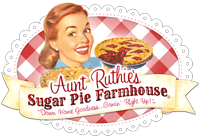
THE 1900S...
"At the turn of the century women's social roles greatly expanded. Before then, most women's lives centered on their labor in the household--caretaking, cooking, sewing, cleaning, and gardening. By 1900, industrial society was drawing more and more women out of the home and off of the farm and into the worlds of work and public life."

Many of the jobs that they did were an extension of what they already did in the home, for example, sewing.

Do you remember in Mary Poppins where the lady of the house goes out for “the cause”, which “infuriated Mr. Banks”? Women, at that time (and this is set a decade earlier), wanted a voice. Aside from the admirable desire of getting the vote, what was that voice, and how different is it from the voice women (or some of us) want today?


THE 1920S...
“For 72 years, women fought for the right to vote. Their struggle came to an end in 1920 when the 19th Amendment was passed. It may have been the first step towards ending discrimination, but it was still the beginning of many struggles to come. The ideal role of women was to get married, have kids, and stay home to keep the house in order, and leaving the men to run the country and corporations and be the head of the household. Women set out to step out of the norm and go against the general agreement that women belonged at home.”

How far the pendulum has swung! After having been repressed for so many years, as far as not having ANY voice, women wanted to emerge into main stream.
Now, they certainly have what they wanted! All, in all, it is probably good, for who wants to live as a lesser-than? But, and there is a “but”…
It has gone too far…
Society now relies on a woman’s income…On women working, not only out of the home BUT also IN the home…It is a frazzled life, indeed.
On top of that, if you don’t have a piece of paper saying that you’re valuable, you’re pretty much nothing, as far as working society is concerned. In the 80’s, one could talk their way into a lot of jobs and from there work their way up. Now, if you don’t have a degree to clip your fingernails, you’re out of luck.
So…One ends up in the throws of the blue-collars using your body, until it finally gives out, more than your intelligence, and believe me, you don’t need a degree to have intelligence!
Many of us today, I believe, would rather put our physical AND our mental efforts into our own homes...
On to the next decade...
THE 1930’S…
“By 1932, the Great Depression [had] left 12 million people out of work in the United States. Women [were] discouraged from ‘taking jobs’ from men. Some states even pass[ed] laws against hiring women. But, many women [had to] work—despite low wages and miserable conditions—to support their families. By 1938, more than 800,000women belong[ed] to unions, three times the number in 1928.”
This film was also set a decade earlier than the 1930’s but depicts Mrs. Bucket, of Willy Wonka and the Chocolate Factory, who is also a woman who must work out of the house to provide for her needy family and extended family…
So, while women did indeed work in the early part of the century, society did not rely on them like it did during World War II and today.

THE 1940s…
“One such [1940s] worker was Mrs Nicklin, who was described in a booklet produced by Guy Motors in the 1940's as one of Wolverhampton's most hard working women. Although scarcely five feet high and about seven stone in weight, she worked a 55 hour week at Guy Motors, brought up 8 children [she originally had 11, but the others died] and on Sundays cooked, washed, cleaned and mended for her husband and family.”

Women like this flat amaze me.
THE 1950S…
“A baby is born. A child develops a high fever. A spouse breaks a leg. A parent suffers a stroke. These are the events that throw a working woman's delicate balance between work and family into chaos."
"Although we read endless stories and reports about the problems faced by working women, we possess inadequate language for what most people view as a private rather than a political problem. ‘That's life,’ we tell each other, instead of trying to forge common solutions to these dilemmas."
"That's exactly what housewives used to say when they felt unhappy and unfulfilled in the 1950s: ‘That's life.’ Although magazines often referred to housewives' unexplained depressions,…”
Well of course they were depressed! They were only human beings yet expected to do it all! I don’t see any difference today…We are STILL just human beings—not super humans; yet, working women are still expected to do it all. There is one consolation, and that is that I do see and hear of more men helping out some. I definitely believe that that is a minority, however.
And, why do you think that there are so many ads on TV for antidepressants? Part of the population, at least, that they are reaching are the working women.

I remember two decades hence, my own mom having to go to work…Temporarily.
She never quit until she retired 20 or so years late…
She worked full-time and had three of us kids at home, along with all of our homework and school activities to deal with. We helped with the chores, but she was the one who was responsible for them. I love my dad, and Dad always did and still does work extremely hard. That said, he came from the generation where the women did the housework, so regardless that Mom worked, she still did all of the cooking, cleaning (with the exception of what we did), ironing, grocery shopping, and clothes shopping…You name it, she did it. The poor woman was stressed out! My word; how very sad! I applaud her with all I have, as she did it well. The house was always clean, and meals were ALWAYS full-course, nutritious, and beautifully prepared. And...We were always dressed well.
I remember Mom trying to hold down her job and home, while her parents were both in need of physical care. She would travel the 50 miles to their house, over and over again, to take care of their needs. It was a great strain on her.
To be continued...














No comments:
Post a Comment